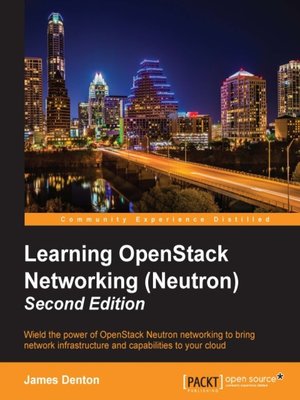
Sign up to save your library
With an OverDrive account, you can save your favorite libraries for at-a-glance information about availability. Find out more about OverDrive accounts.
Find this title in Libby, the library reading app by OverDrive.



Search for a digital library with this title
Title found at these libraries:
| Library Name | Distance |
|---|---|
| Loading... |
Wield the power of OpenStack Neutron networking to bring network infrastructure and capabilities to your cloudAbout This Book
Who This Book Is For
If you are an OpenStack-based cloud operator and administrator who is new to Neutron networking and wants to build your very own OpenStack cloud, then this book is for you.
Prior networking experience and a physical server and network infrastructure is recommended to follow along with concepts demonstrated in the book.What You Will Learn
In Detail
OpenStack Neutron is an OpenStack component that provides networking as a service for other OpenStack services to architect networks and create virtual machines through its API. This API lets you define network connectivity in order to leverage network capabilities to cloud deployments.
Through this practical book, you will build a strong foundational knowledge of Neutron, and will architect and build an OpenStack cloud using advanced networking features.
We start with an introduction to OpenStack Neutron and its various components, including virtual switching, routing, FWaaS, VPNaaS, and LBaaS. You'll also get hands-on by installing OpenStack and Neutron and its components, and use agents and plugins to orchestrate network connectivity and build a virtual switching infrastructure.
Moving on, you'll get to grips with the HA routing capabilities utilizing VRRP and distributed virtual routers in Neutron. You'll also discover load balancing fundamentals, including the difference between nodes, pools, pool members, and virtual IPs. You'll discover the purpose of security groups and learn how to apply the security concept to your cloud/tenant/instance.
Finally, you'll configure virtual private networks that will allow you to avoid the use of SNAT and floating IPs when connecting to remote networks.Style and approach
This easy-to-follow guide on networking in OpenStack follows a step-by-step process to installing OpenStack and configuring the base networking components. Each major networking component has a dedicated chapter that will build on your experience gained from prior chapters.







